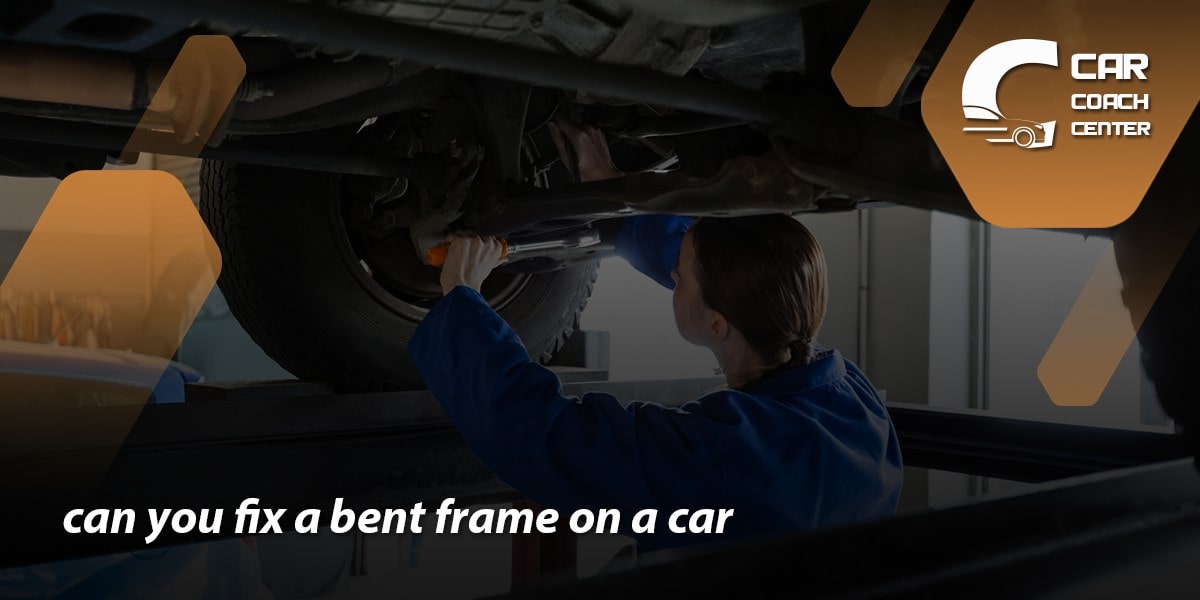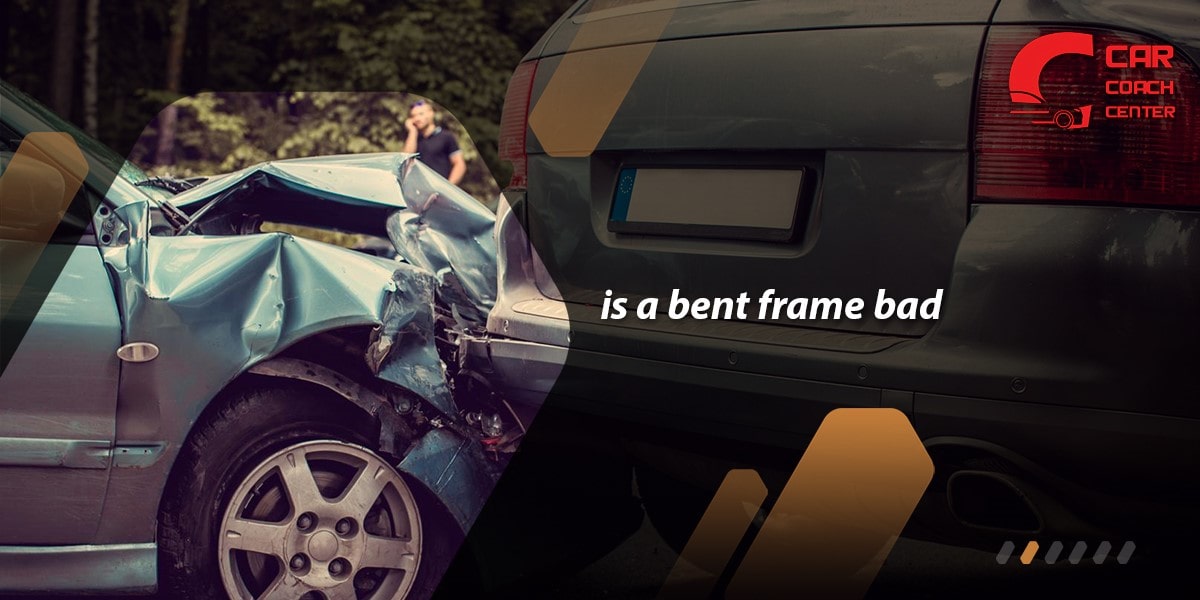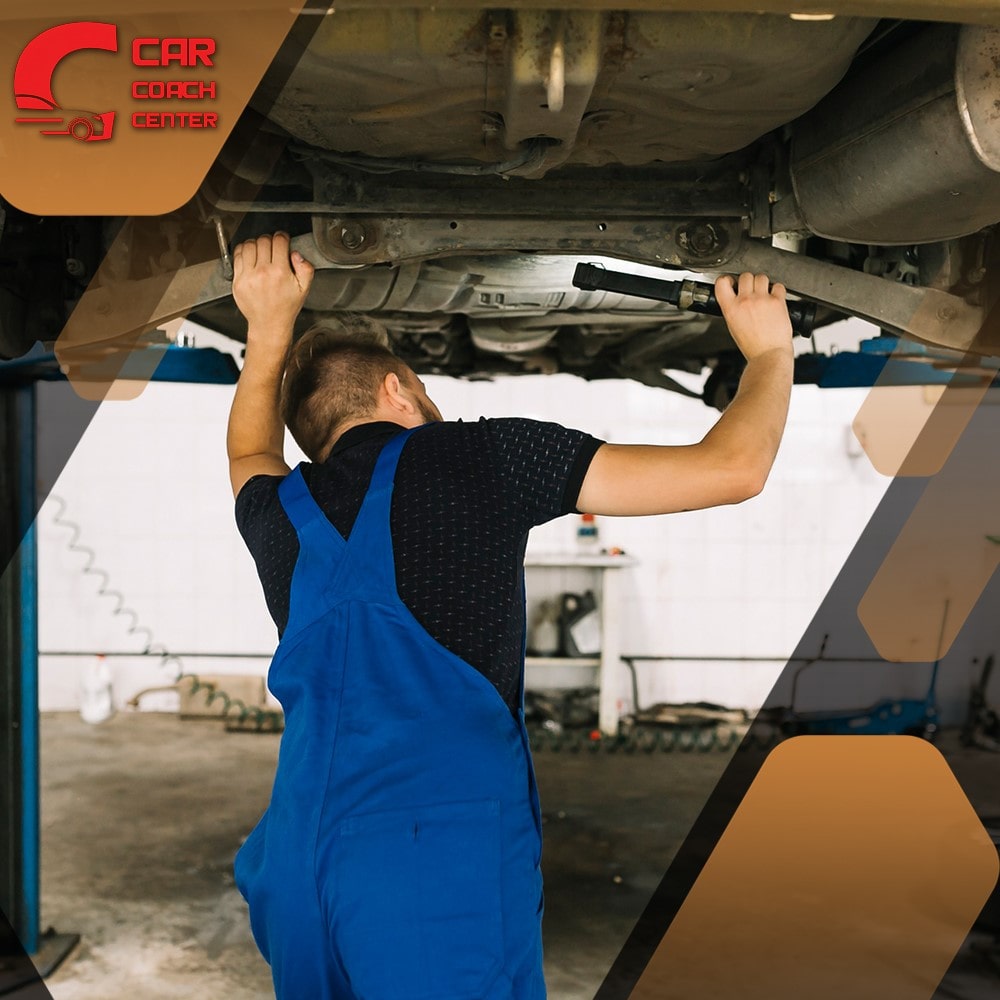Can You Drive A Car With A Bent Frame
Regarding car accidents and collisions, the damage sustained isn’t always limited to a dented bumper or a shattered windshield. One critical concern that often arises is a bent car frame. A vehicle’s frame serves as its structural backbone, providing stability, support, and protection for occupants and mechanical components. However, the question lingers: Can you safely drive a car with a bent frame? This article aims to delve into the intricacies of this issue, shedding light on the potential risks, exploring repair possibilities, and examining the financial and legal implications involved.

By gaining a comprehensive understanding of driving with a bent frame, readers can make informed decisions about their vehicle’s safety, the financial viability of repairs, and the necessary precautions to ensure a secure and smooth driving experience. Join us as we explore the world of bent car frames and the considerations that come with them.
The Telltale Signs: Uncovering a Bent Frame
A car’s frame is the backbone of its structure, and any damage can have significant implications for the vehicle’s performance and safety. Identifying a bent frame is crucial to understanding the extent of the damage and determining the necessary course of action. While some signs may be obvious, others require a more careful inspection. Here, we will explore the telltale signs that can help uncover a bent car frame.
Visual Inspection
A visual examination is the first step in detecting frame damage. Look for asymmetry or misalignment in the body panels, such as uneven gaps between the doors and fenders. Notice if the vehicle appears saggy or tilted when viewed from different angles. These visual cues can indicate that the frame has been compromised.
Alignment Issues
Uneven tire wear or persistent steering problems, such as the vehicle pulling to one side, often indicate a bent frame. If the car doesn’t track straight on a flat road, it may result in frame misalignment affecting the suspension and steering components.
Doors and Windows
Difficulties opening or closing doors, windows that don’t roll up or down smoothly, or a misaligned trunk or hood can be signs of frame damage. A bent frame may affect the proper alignment of these components, making them operate properly and consistently.
Unusual Noises
Unusual creaking, grinding, or squeaking noises coming from the vehicle while driving can point to frame damage. These sounds could result from stressed metal components rubbing against each other due to a distorted frame.
Suspension Irregularities
Pay attention to any excessive bouncing, dipping, or swaying of the vehicle while driving. Frame damage can disrupt the suspension system’s ability to maintain stability, resulting in an uneven ride.
Problems with Wheel Alignment
Even after professional adjustments, persistent issues with wheel alignment can indicate a bent frame. When the frame is compromised, it affects the angles at which the wheels sit, leading to recurrent alignment problems.

Understanding the Implications: Risks and Safety Concerns
When a car’s frame is bent or damaged, it poses significant risks and safety concerns for the driver and passengers. The vehicle’s structural integrity is compromised, which can have severe consequences in the event of an accident or even during normal driving conditions. To fully comprehend the implications of driving a car with a bent frame, exploring the associated risks and safety concerns is important.
Reduced Vehicle Stability
A bent frame affects the vehicle’s stability, making it more difficult to control. The compromised structural integrity can lead to unpredictable handling, especially during braking, turning, or sudden lane changes. This instability increases the likelihood of accidents and can put occupants at risk.
Impaired Crash Protection
The frame of a car is designed to absorb and distribute impact forces during a collision. A bent frame diminishes the vehicle’s ability to withstand crashes effectively. The energy that should be absorbed and redirected by the frame may be transferred to other parts of the car, increasing the risk of injuries to the occupants.
Weakened Occupant Protection
A bent frame can compromise the functionality of safety features like airbags, seat belts, and crumple zones. These systems rely on a structurally sound frame to work optimally in an accident. With frame damage, their effectiveness in protecting occupants is significantly reduced.
Mechanical Component Misalignment
Frame damage can cause misalignment of various mechanical components, including suspension, steering, and braking systems. Misaligned components can lead to poor vehicle performance, decreased braking efficiency, and increased tire and other parts wear. This compromises safety and adds strain on the vehicle, potentially causing further damage.
Increased Risk of Secondary Accidents
A car with a bent frame is more susceptible to secondary accidents. For example, compromised wheel alignment due to frame damage can lead to tire blowouts or loss of control while driving. These subsequent accidents can further endanger the occupants and others on the road.
Legal and Insurance Implications
Driving a car with a known bent frame may have legal and insurance consequences. In some jurisdictions, operating a vehicle with structural damage that impairs its safety may be illegal. Moreover, insurance coverage may be affected, as insurers may consider a vehicle with a bent frame to be a higher risk.
Unconventional Solutions: Can a Bent Frame Be Repaired?
When faced with a bent car frame, many vehicle owners wonder if unconventional solutions are available before considering more drastic measures such as frame replacement. While traditional frame straightening methods are commonly employed, advancements in technology and techniques have introduced alternative approaches to repairing a bent frame. Let’s explore these unconventional solutions and assess their effectiveness.

Heat Induction
Heat induction is a technique that involves using a high-intensity heat source to soften the metal surrounding the bent area. This allows for targeted reshaping and realignment of the frame. Skilled technicians carefully apply heat and use specialized tools to restore the frame’s original shape. However, this method is highly dependent on the extent and location of the damage, and not all frames can be effectively repaired using heat induction.
Hydraulic Pressing
Hydraulic pressing involves using hydraulic machinery to apply controlled force to the damaged areas of the frame. This force helps push or pull the frame back into its original position. Technicians use precision tools and equipment to gradually apply pressure and manipulate the frame until it aligns correctly. Hydraulic pressing can be effective for certain types of frame damage, but it requires expertise and careful monitoring to avoid further distortions.
Frame Pulling
Frame pulling involves using specialized equipment, such as hydraulic rams and chains, to pull the frame back into alignment. By attaching these tools to specific points on the frame, technicians can exert force in the opposite direction of the damage, gradually returning the frame to its intended shape. Frame pulling requires skilled professionals who can accurately assess the damage and apply the necessary force without causing additional stress or weakening the frame.
Computerized Frame Measuring
Computerized frame measuring systems use laser technology and sophisticated software to assess a bent frame’s alignment accurately. By comparing the vehicle’s measurements to factory specifications, technicians can identify the extent of the damage and plan the most appropriate repairs. Computerized frame measuring ensures precision and can aid in guiding the repair process, whether using conventional or unconventional methods.
Frame Section Replacement
In some cases, when the damage is severe or concentrated in specific areas, a section of the frame may need to be replaced. This unconventional solution involves carefully cutting out the damaged section and welding in a new frame piece. Skilled welders ensure proper alignment and structural integrity during the replacement process. Although it may involve more extensive repairs, frame section replacement can effectively restore the integrity of the vehicle’s structure.
Limitations and Considerations
It’s important to note that not all frames can be repaired using unconventional methods. The extent of the damage, the location, and the specific make and model of the vehicle play significant roles in determining the feasibility of these solutions. Consulting with experienced professionals is essential to accurately assess the damage and explore the best options for repair.
Salvage or Scrap: Assessing the Financial Viability
When faced with a car with a bent frame, vehicle owners often question the financial viability of repairing the damage. Depending on the extent of the frame damage, the cost of repairs, and the overall value of the vehicle, it may be necessary to consider whether salvaging or scrapping the car is a more practical option. Assessing the financial viability involves carefully weighing the costs and value factors associated with repairing a car with a bent frame.
Repair Costs
The first consideration is the estimated cost of repairing the bent frame. Obtaining quotes from reputable repair shops or frame specialists can provide an idea of the expenses involved. Consider the cost of labor, parts, and any additional repairs that may be necessary due to the frame damage. It’s crucial to compare the repair costs with the vehicle’s value to determine if the investment is financially justifiable.
Vehicle Value
Assessing the car’s value is essential in determining whether repairing a bent frame is worthwhile. Factors such as the make, model, year, mileage, overall condition, and market demand influence the vehicle’s value. Consider consulting car valuation resources or getting professional appraisals for an accurate assessment. If the car’s value is relatively low compared to the repair costs, considering other options may be more practical.
Insurance Coverage
Review your insurance coverage and policy terms to understand how frame damage is handled. Some insurance policies may cover the cost of repairs, while others may not. Additionally, consider the impact of a frame damage claim on your future insurance premiums. It’s important to factor in the financial implications of filing an insurance claim and any potential deductibles.
Market Value of Repaired Vehicle
Consider the market value of the vehicle after the frame repairs are completed. Research similar vehicles in the market to determine if the repaired car’s value aligns with your expectations. If the repaired vehicle’s market value is significantly lower than anticipated, it may further affect the financial viability of the repair.
Alternative Transportation Options
Assess the availability and cost of alternative transportation options during the repair process. If the repairs are extensive and time-consuming, arranging for alternative transportation, such as rentals or public transportation, can add to the overall expenses. Consider the convenience and cost-effectiveness of these alternatives when evaluating the financial viability of repairing the car.

Personal Sentimental Value
Lastly, consider any personal attachment or sentimental value you may have for the vehicle. While sentimental value is subjective, it can sometimes influence the decision-making process. If the sentimental value outweighs the financial considerations, it may justify pursuing repairs despite the costs involved.
Legal and Insurance Implications: Navigating the Paperwork
Dealing with a car with a bent frame involves physical repairs and navigating the legal and insurance aspects associated with frame damage. Understanding the paperwork involved is crucial to ensure compliance with legal requirements and to effectively navigate insurance claims and coverage. Let’s explore the key legal and insurance implications of driving a car with a bent frame and how to navigate the associated paperwork.
Compliance with Local Regulations
Start by familiarizing yourself with the local regulations regarding frame damage. Some jurisdictions have specific laws that prohibit driving a vehicle with structural damage that impairs its safety. Research the requirements and limitations imposed by your local authorities to ensure compliance. It’s important to understand if repairs must be carried out by licensed professionals and whether inspections or certifications are necessary before the vehicle can be deemed roadworthy.
Insurance Coverage
Review your insurance policy to determine how frame damage is covered. Contact your insurance provider to report the incident and initiate the claims process. Understand the terms and conditions of your policy, including any exclusions or limitations related to frame repairs. To support your claim, provide the necessary documentation, such as photographs, estimates, and repair reports. Be prepared for potential inspections or assessments conducted by the insurance company to determine the extent of the damage.
Claims Process
When filing an insurance claim for frame damage, be prepared to complete the necessary paperwork. This may include claim forms, repair estimates, photographs, police reports (if applicable), and any other documentation your insurance provider requires. Keep records of all communication with your insurance company, including names of representatives, dates, and details of discussions. Follow up promptly on any requests for additional information or documentation to ensure a smooth claims process.
Salvage Titles
In some cases, if the cost of repairing the bent frame exceeds a certain threshold or the vehicle is deemed a total loss by the insurance company, it may be issued a salvage title. A salvage title indicates that the vehicle has sustained significant damage and has been declared a total loss by the insurance company. Salvage titles may affect the vehicle’s resale value and complicate the insurance coverage and registration process. Familiarize yourself with the local regulations regarding salvage titles and the requirements for re-registering or selling a vehicle with this designation.
Legal Disclosures
When selling a car with a bent frame, it is important to disclose the frame damage to potential buyers. Failure to disclose known frame damage can result in legal consequences and potential liability. Be transparent and provide accurate information about the vehicle’s condition, including any repairs or modifications to address the frame damage.
Professional Assistance
Given the complexity of legal and insurance paperwork, it may be beneficial to seek professional assistance. Consulting with an attorney specializing in automotive law can guide legal requirements and potential liabilities. Similarly, working with an experienced insurance agent or claims specialist can help you navigate the insurance process and ensure that you understand your coverage and rights.
Alternatives and Precautions: Making Informed Decisions
When faced with a car with a bent frame, it’s essential to explore alternatives and take necessary precautions to make informed decisions about your vehicle’s future. While repairing the frame may be the conventional approach, there are other options to consider. Additionally, taking precautions can help prevent frame damage and ensure a safe driving experience. Let’s explore some alternatives and precautions to help you make informed decisions.
Temporary Solutions
If the cost of repairing the bent frame exceeds the value of the vehicle or is not financially feasible, consider temporary solutions. These can include reinforcing the damaged areas, installing additional supports or braces, or using specialized clamps to stabilize the frame temporarily. While these solutions may not provide a permanent fix, they can help ensure safer driving conditions until a more permanent solution can be pursued.
Vehicle Inspection and Maintenance
Regular vehicle inspections and maintenance play a crucial role in preventing frame damage. Stay vigilant and promptly address any signs of wear and tear, such as suspension issues, misaligned components, or unusual noises. Timely repairs and maintenance can identify potential problems early on and prevent them from escalating into severe frame damage.
Safe Driving Practices
Safe driving habits are key to protecting your vehicle’s frame from unnecessary damage. Avoid aggressive driving, excessive speed, and reckless maneuvers that stress the frame. Be mindful of road conditions and obstacles, and exercise caution when parking or maneuvering in tight spaces to avoid collisions that can potentially damage the frame.
Regular Frame Inspections
Consider scheduling regular frame inspections with a qualified mechanic or frame specialist. These professionals can assess the frame’s condition, identify any signs of damage, and provide guidance on necessary repairs or preventive measures. Regular inspections can help catch frame damage early, allowing for more cost-effective repairs or proactive measures to maintain the vehicle’s structural integrity.
Vehicle History and Carfax Reports
Before purchasing a used vehicle, obtain a vehicle history report or Carfax report. These reports provide valuable information about the vehicle’s past, including any reported accidents or damage. Pay attention to any mention of frame repairs or damage, as this can impact the vehicle’s long-term reliability and value. Carefully reviewing these reports can help you decide when buying a used car.
Consultation with Professionals
When considering repairs, alternatives, or preventive measures, consult with professionals specializing in frame repair and automotive maintenance. These experts can provide valuable insights, assess the extent of the damage, and offer tailored recommendations based on their expertise and experience. Seek multiple opinions if needed to ensure you comprehensively understand the available options.
Conclusion
Driving a car with a bent frame poses significant risks and safety concerns. Understanding the telltale signs of frame damage, assessing the implications for vehicle stability and occupant protection, and navigating the legal and insurance aspects associated with frame repairs are crucial. Individuals can make informed decisions regarding their vehicle’s future by exploring unconventional repair solutions, assessing the financial viability of repairs, and considering alternatives and precautions.
Whether it’s pursuing frame straightening techniques, salvaging or scrapping the car, or implementing temporary solutions, prioritizing safety and compliance with legal requirements is paramount. Regular inspections, safe driving practices, and thorough documentation during insurance claims can help mitigate risks and ensure a smooth process.
Making informed decisions about a car with a bent frame requires a comprehensive understanding of the available options, weighing the costs, value, and safety considerations. Ultimately, prioritizing safety, consulting professionals, and considering long-term implications will guide individuals in choosing the most appropriate path forward for their vehicle and their peace of mind.
Carcoachcenter.com provides valuable information and resources for car owners to help them maintain and care for their vehicles.
Can you drive a car with a bent frame?
Driving a car with a bent frame is not recommended due to the associated risks to safety and vehicle performance.
How can you tell if a car has a bent frame?
Signs of a bent car frame include visual asymmetry, alignment issues, problems with doors and windows, unusual noises, suspension irregularities, and persistent wheel alignment problems.
What are the alternatives to repairing a car with a bent frame?
Alternatives can include temporary solutions, salvaging or scrapping the car, and exploring options based on the extent of the damage and the vehicle's value.


